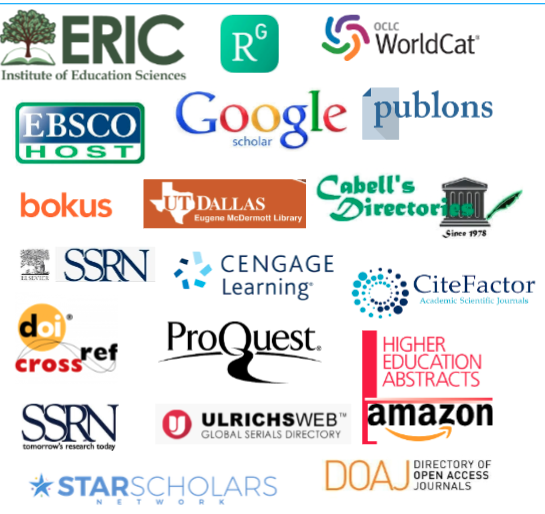The Summer Bridge Program
An Effective Agent in College Students’ Retention
DOI:
https://doi.org/10.32674/jise.v7i2.1207Abstract
Student retention is a consequential effort of all institutions of higher learning today. The survival of the institution is dependent upon the success of students in obtaining their degrees (Knox, 2005; Noel, 1978). In order to continue to grow a base of Science, Technology, Engineering and Mathematics (STEM) students and produce quality graduates, it is imperative that best practices in student success and retention be identified, documented and replicated. This study looked at the Tennessee Louis Stokes Alliance for Minority Participation Summer Bridge program results in STEM major retention and success in designated courses. Three years of the TLSAMP Summer Bridge were randomly chosen from the inception of the first joint TLSAMP Summer Bridge Program in 2004 and the last one in 2013. The years chosen for this study were 2008, 2012 and 2013. The following information was gathered for participants in the 2008, 2012, and 2013 TLSAMP Summer Bridge Programs: (1) Major, (2) If student returned to school after freshmen year (3) If a change of major after freshman year, ( (4) First English course grade, and (5) First Math course grade. TLSAMP Summer Bridge showed an indication to be a best practice for student retention and success in those targeted courses addressed in the bridge program. From a broader perspective, it can be inferred that what works for STEM majors can also work for other majors when tailored for them and the culture of the institution. Further study on the effectiveness and implementation of summer bridge programs on student recruitment and student retention is recommended.
Downloads
References
Burleson, D., Hallett, R., & Park, D. (2008). College knowledge: An assessment of urban college adaptation experience of minority immigrant students. Journal of the First Year Experience and Students in Transition 21, no. 2: 9-34.
Knox, B. H. (2005, May). Recruitment and retention of underrepresented students in Science, Technology, Engineering and Mathematics: An evaluation of the Tennessee Louis Stokes Alliance for Minority Participation Program. (Doctoral Dissertation). Available from ProQuest (UMI No. 3167778).
Lee, J.D. (2002). More than ability: Gender and personal relationships influence science and technology involvement. Sociology of Education, 75(4), 349-373.
LeMoyne-Owen College. June 21, 2017. Retrieved from http://www.loc.edu/about-loc/default.asp
Louis Stokes Alliance for Minority Participation. Retrieved from https://www.nsf.gov/pubs/2015/nsf15594/nsf15594.txt
Martinez, C. (2013). Stem, shoots, and leaves: Increasing access of underrepresented groups to high-quality, career-readying Science, Technology, Engineering and Mathematics education. Harvard Journal of Hispanic Policy, Annual 2013 v25, p. 15. Retrieved from Questia.
Measuring Up 2008. The National Report Card on Higher Education. June 23, 2017. Retrieved from http://measuringup2008.highereducation.org/.
Middle Tennessee State University. June 21, 2017. Retrieved from http://www.mtsu.edu/about/index.php
National Science Foundation. June 23, 2017. Retrieved from https://www.nsf.gov/about/performance/
National Science Foundation Strategic Plan 2014-2018. June 23, 2017. Retrieved from https://www.nsf.gov/pubs/2014/nsf14043/nsf14043.pdf
National Science Foundation, What is the S&E retention rate in U.S. 4-year institutions? February 22, 2019. Retrieved from https://www.nsf.gov/nsb/sei/edTool/data/college- 10.html
Noel, L. (1978). Reducing the dropout rate (Vol. 3). San Francisco: Jossey-Bass, Inc.
Roach, R. (2015, August 27). STEM success: African-American STEM graduates nave benefited from a range of best practices that experts have cited as key factors in STEM student success at the undergraduate level. Diverse Issues in Higher Education, 32(15), 23.
Soria, K. M., & Stebleton, M. J. (2012). First-generation students’ academic engagement and retention. Teaching in Higher Education 17(6). December 2012, 673-685.
Stolle-McAllister, K. (2011). The case for summer bridge: Building social and cultural capital for talented black STEM students. Science Educator, 20(2), 12. Retrieved from Questia.
Strayhorn, T. L. (2012). College students' sense of belonging: A key to educational success for all students. New York, NY: Routledge.
Taylor, C. (1986, May). Black Students on Predominantly White College Campuses in the 1980s. Journal of College Student Personnel, 27, 196-209.
Tennessee Louis Stokes Alliance for Minority Participation. June 23, 2017. Retrieved from www.tnstate.edu/tlsamp
Tennessee State University. June 21, 2017. Retrieved from
http://www.tnstate.edu/about_tsu/fast_facts.aspx
Tinto, V. (2010). From theory to action: Exploring the institutional conditions for student retention. In J. C. Smart (Ed.), Higher education: Handbook of theory and research (Vol. 25, pp. 51-89). Dordrecht, the Netherlands: Springer.
Tomasko, D. L., Ridgway, J. S., Waller, R. J., & Olesik, S. V. (2016). Association of summer bridge program outcomes with STEM retention of targeted demographic groups. Journal of College Science Teaching, 45(4). Retrieved from Questia.
University of Memphis. June 21, 2017. Retrieved from http://oir.memphis.edu/WebReports/ProfilesAndFactbooks/CDS2016_2017.pdf
University of Tennessee- Knoxville. June 21, 2017. Retrieved from http://www.utk.edu/aboutut/numbers/
U.S. News & World Report. Nashville overtakes Memphis as Tennessee's largest city. June 23, 2017. Retrieved from https://www.usnews.com/news/best-states/tennessee/articles/2017-05-26/nashville-overtakes-memphis-as-tennessees-largest-city
Vanderbilt University. June 21, 2017. Retrieved from http://vanderbilt.edu/about/facts







